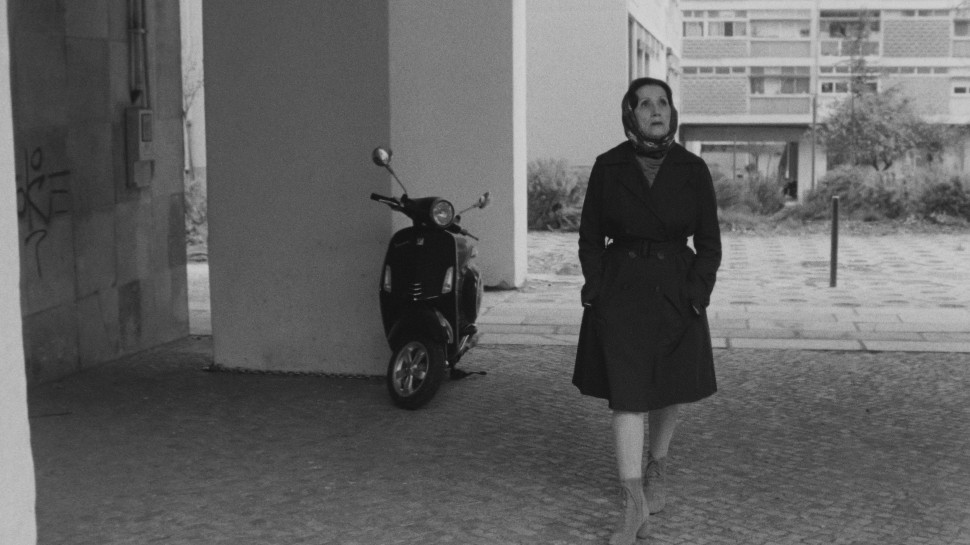
Where Is This Street? or, With No Before and After
$15 Special Event Tickets
With Isabel Ruth.
Portugal/France, 2022, DCP, color and b&w, 88 min.
Portuguese with English subtitles.
DCP source: Terratreme
Our cinema has always alternated between fiction and documentary—from the more documentary 1997-1999 diptych, directed by João Pedro, to Red Dawn (2011), The King’s Body (2013) and Iec Long (2014), to films like The Last Time I Saw Macau (2012), Morning of Saint Anthony’s Day (2012), or Mahjong (2013), in which fiction merges with documentary and vice versa. We believe that all of our films, even the most “purely fictional,” are also documentary in genre—O Fantasma (2000), directed by João Pedro, or As the Flames Rose (2012), directed by João Rui, are also cartographies of the city of Lisbon, physical and emotional documentaries of the places we have filmed, many of which have disappeared or changed over the years, as the city transformed. This theme of transformation and metamorphosis, as a transformative driver of things, characters and desire, shaped most of the films that we have made, between feature films and short films (we have always been interested in alternating formats and genres). This physical metamorphosis in a literal sense, but also in a social and ultimately political sense, has reached a paroxysm in João Pedro’s feature, The Ornithologist (2016), where he takes the place of the main actor during its climax.
“Look, could you please tell me WHERE IS THIS STREET?” is the first sentence said by the main character Júlio, played by Rui Gomes in the film The Green Years by Paulo Rocha (1963), when he arrives at the Rossio train station in Lisbon, from the country. The title Where is This Street? or, With No Before and After echoes Abbas Kiarostami's classic Where Is the Friend's House? (1987). The disarming simplicity of Kiarostami's film resounds in our film, which goes back to the city of Lisbon filmed by Paulo Rocha in the early 1960s in order to portray contemporary Lisbon. How is the city now, plagued by globalization and gentrification? These words have recently forced their way into our lexicon, as violent as their effects. How can we look now at the places of Rocha's modern city—a faithful and sensitive portrait of the changes to the social, urban and experiential fabric of Lisbon, which suddenly reinvented all Portuguese cinema— without nostalgia or false romanticism? The double title of our film also echoes a line of The Green Years’ title song, “With No Before and After.”
From the window of our apartment in Lisbon, one can see a location of Rocha's film, practically the same perspective from which Rocha filmed it almost sixty years ago. This was the starting point of our new film: from our window, we looked again at The Green Years, guided by Paulo Rocha's gaze, to places that are now irremediably different. We return to the theme of metamorphosis that has clearly never left us: what flesh do the ghosts of the 1960s wear today?
Our relationship with Paulo Rocha’s cinema began many years ago as spectators the first time we saw The Green Years. João Pedro remembers that he immediately recognized the buildings and vacant lots, near which he had always lived. Rocha was João Pedro's teacher at the Lisbon Theatre and Film School, a decisive encounter in his life and training, and they remained friends until Rocha’s death. João Pedro paid tribute to his teacher in the short film Allegoria della Prudenza (commissioned for the 70th anniversary of the Venice Film Festival), filming the two tombs of Mizoguchi (one of Rocha's favorite filmmakers), in Tokyo and Kyoto, along with the urn containing Rocha's ashes, kept in the family vault at the Ovar cemetery. João Pedro worked with Jorge Silva Melo on a catalogue on Paulo Rocha, published by the Cinemateca Portuguesa in 1996, during the celebrations of the Centenary of Cinema. But it was João Pedro’s first film, O Fantasma, set in the Alvalade neighborhood where we live (the same neighborhood where Paulo Rocha lived and where he filmed The Green Years), that made this filiation clear.
We started shooting in 16mm in October 2019. Since we were drawing on Rocha’s film, it made no sense for us to shoot in any other medium but analog. Another shooting phase was scheduled for May and June 2020, which ended up being postponed again and again due to the pandemic. In the end, we filmed the new ways and rules of living in society brought on by the pandemic: masks were emerging, social distancing was pushing people away, the endless noise of ambulances, police cars, firefighters... After the last period of shooting, in October 2021, one thing became evident: the locations of The Green Years were filmed without action or actors. Without knowing it, we had made a film that strangely foreshadowed what would become our reality. Strolling through the empty streets of Lisbon during the state of emergency, we found images similar to those we had filmed before the Covid virus was even heard of! Although it was not originally our intention, the deeper nature of our film changed—a new metamorphosis— following the vortex that upended all our lives. May this film also serve to reflect on this new reality and its unpredictable consequences. – João Pedro Rodrigues and João Rui Guerra da Mata








